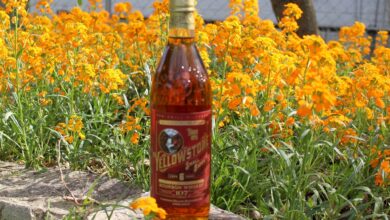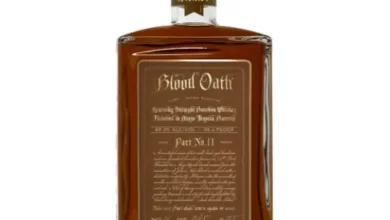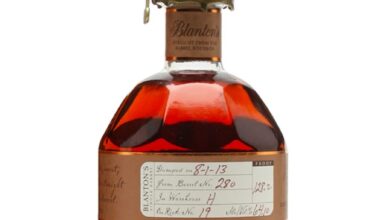Crown Royal Single Malt Whisky Review
By Richard Thomas
Rating: B-

(Credit: Richard Thomas)
One more block is laid into the case that the American Single Malt has arrived with the spread of the idea to North America as a whole, because now Crown Royal has released its own single malt. Perhaps the only thing missing is popular clamor, and I say that as a fan of the category. Without having the actual sales data, gathered from literally dozens of companies great and small, the only clue a general observer has to how well American malts are actually doing is 1) that they keep coming and aren’t being withdrawn; and 2) what people actually say about them. On the latter note, all the passion anecdotally comes from the kind of open-minded whiskey enthusiast who likes single malts without being a Scotch snob.
Are you part of that club too? Because believe you me, we are in the minority.
My musings on the swelling American Single Malt category out of the way, Canada getting in on the act is actually a long time in coming. That is because of the uniquely Canadian approach to whisky-making, which includes making a slew of individual whiskies that are made entirely from a single grain, including whiskies made with 100% malted barley and mixed malted and unmalted barley. So, at least some Canadian distillers have been sitting on not just stocks of their own single malt whiskies all along, but (in Crown Royal’s case) a whisky with an Irish pot still whiskey mash bill but distilled to high proof in a column still.
Being Canadian, a number of interesting wrinkles lurk behind how this whisky was made. First, it would be strange if it were distilled on a pot still, as required in Scotland, Ireland and Japan, but not by the America Single Malt Whiskey Commission or by anything in Canadian whisky law. I say strange because Crown Royal has a dozen column stills, but no pot stills. It was also probably distilled to much higher proof than would be the case in Scotland or the United States, since Canadian whisky law allows for that. It’s also a good guess the whisky was aged in the usual Canadian mixture of new and used white oak casks. I have asked Diageo for clarification on all these points, so look out for an update below. Finally, one certain thing about the whisky is that it was bottled at 90 proof.
The Whisky
My pour has a coloring that sits neatly on the dividing line between golden and copper. I found the nose delicate, if not to say faint. The green apple and vanilla were easy to pick up, but an effervescent trace of oak is much harder to chase down.
The palate had a creamier texture than the lightness of the nose suggested. It leads a touch grassy, followed by a current of honey, caramel and finally butterscotch. The butterscotch rises especially high on the back end, so it could be said those three elements flow through in near succession. The finish concludes with green oak and a grain of pepper.
Crown Royal describes their malt as “cut from the cold,” and recommended drinking it chilled or on the rocks. So, I tried this both at room temperature, neat and in a Norlan glass, and on the rocks in a tumbler. It made no difference. Although pleasant, Crown Royal’s malt is pretty non-descript. The entry of a single malt from either Crown Royal or Canada generally called out for definition, since the Canadian single malt sector is made up mostly of craft-level releases that are very hard to get outside of the country, and this whisky does not deliver that. Instead, it’s an average drinker for its class.
The Price
A bottle of Crown Royal Malt should cost you $55.




